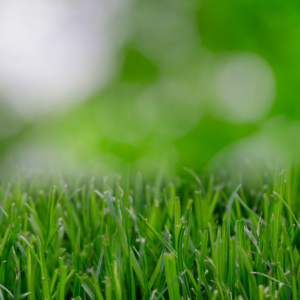Whether you love mowing your lawn or hate it, it’s a job that needs to be done. As with most things, though, there’s a difference between doing it and doing it well. If you find yourself wondering why your neighbors have an amazing lawn while yours looks all the worse for wear, it could be more than just a matter of perspective; it’s possible that the grass really is greener on the other side.
This doesn’t have to be the case, though. Part of the problem might be how you’re caring for your lawn. If you haven’t put much thought into the specifics of yard care, here are a few things to think about.
Prep Your Mower for Mowing Your Lawn
Too many people approach the beginning of the mowing season the same way that they do the entire rest of the season: they put some gas in the mower and go. This is a good way to damage your lawn and wear out your mower at the same time. Start each season with an oil change and fresh gas, and check your mower blades for cracks, dullness or other signs that they need to be sharpened or replaced. Keep an eye on your grass as you mow; if it’s becoming ragged, this is a sign that your blades are getting dull again. Even a little bit of mower maintenance will make the cut easier on your lawn and keep your mower running in tip-top condition.
Learn Your Lawn
A lot of people think that grass is grass, but there are actually a lot of differences between grass species. Take a little time to find out what sort of grass you have growing in your lawn. If necessary, you can take a sample to your local agricultural extension office to get the job done. Once you know what kind of grass you have, you can learn the seasons when it actively grows, what sort of water and fertilizer needs it has, and even details about how it should be cut. If you need to reseed part of your lawn, knowing the existing grass type will also ensure that you get the right type of seed so that everything matches.

Cut to the Right Height
If your lawn is going to flourish, the grass needs to have enough blade area to absorb sunlight to meet its growing needs. Cutting it too short can damage it, causing the grass to wilt or brown, in some cases even killing off patches. As a general rule you’ll often hear that you should leave around 3 inches of grass when you cut, but this can vary depending on the type of grass you have. If in doubt, you can set the blade height between the 3-inch to 3 ½-inch mark to be safe, but you’ll have much more control over your lawn if you learn the grass type and find the optimal cutting height based on that.
Mind Those Clippings
It’s usually best to leave your clippings on the ground, as they provide much-needed nutrients to the lawn as they decompose. If you don’t like the look of them, consider a mulching blade and guard for your mower to ensure that they get cut into smaller pieces, or make multiple passes over the same area. The main exceptions to this are the first and last cuts of the year; in those instances, your lawn will do better if you bag the clippings instead.
Adapt Throughout the Year
One important thing to keep in mind is that grass is a living thing and grows differently depending on the time of the year and the local weather conditions. During the heat of the summer, make your lawn more drought resistant by adjust your cut height up a little; this gives the grass more blade area to collect dew on. In early spring and into the fall, cut less often to avoid shocking the grass. Even the direction of your cuts is important, especially if it’s been raining a lot; to prevent damaging the grass or compacting the soil too much, change direction every two or three cuts, switching to a cutting pattern around 90 degrees off from what you’ve been doing.
(Information provided by Homekeepr)
After mowing your lawn, take a break and check our post on Shasta Lake https://explorereddingliving.com/houseboating-on-shasta-lake/



Leave a Reply